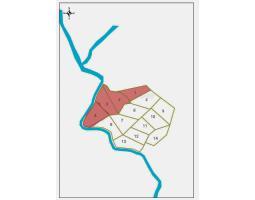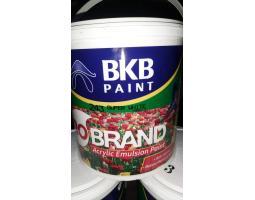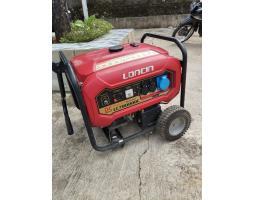Kunci Jawaban Bahasa Inggris Kelas 9 Halaman 148 Semester 2, Chapter 8: Traditional Foods
Berikut kunci jawaban Bahasa Inggris kelas 9 halaman 148 semester 2. Memuat tugas Observing & Asking Questions Chapter 8 terkait Traditional Food.
Penulis: Enggar Kusuma Wardani
Editor: Nuryanti

TRIBUNNEWS.COM - Berikut kunci jawaban Bahasa Inggris kelas 9 halaman 148 semester 2.
Pada buku Bahasa Inggris kelas 9 halaman 148, terdapat tugas Observing & Asking Questions dalam Chapter 8.
Tugas pada buku Bahasa Inggris kelas 9 halaman 148 memuat soal untuk membuat daftar fakta terkait makanan tradisional.
Sebelum melihat kunci jawaban Bahasa Inggris kelas 9, siswa diharapkan terlebih dahulu menjawab soal secara mandiri.
Kunci jawaban pada artikel ini digunakan sebagai panduan dan pembanding oleh orang tua untuk mengoreksi pekerjaan anak.
Ada kemungkinan terdapat perbedaan jawaban pada kunci jawaban Bahasa Inggris kelas 9 halaman 148.
Baca juga: Kunci Jawaban Bahasa Inggris Kelas 9 Halaman 133, Chapter 7: Observing and Asking Question
Observing & Asking Questions
We will list the facts about the traditional foods stated by Udin, Siti, Lina and Beni. We will list eight facts about satay, six facts about 'lemper', seven facts about 'pempek, and eight facts about 'kerupuk.
Here are what we will do. We will work in groups. First, we will study and copy the examples to our book. Second, we will read the descriptions carefully. Third, we will handwrite in our book the facts we find in the descriptions. Finally, we will underline the verb in every sentence.
We will make sure we know the meaning of every word. We will use a dictionary. We will spell the words and use the punctuation marks correctly. While we are writing, we will say the sentences loudly, clearly, and correctly. If we have any problems, we will go to our teacher for help.
1. Eight facts about satay stated by Udin.
- Satay or ‘sate’ is made of chicken, beef, or lamb.
- ‘Sate ayam’ is made of chicken.
- ‘Sate kambing’ is made of lamb.
- Some pieces of well marinated meat are skewered.
- ‘Sate sapi’ is made of beef.
- On skewers, satay is grilled over very hot charcoal.
- It is served with peanut sauce or soy sauce.
- Small pieces of meat are marinated in spicy soy sauce.
Baca juga: Kunci Jawaban Seni Budaya Kelas 9 Halaman 159 Semester 2, Bab 9: Seni Grafis
2. Six facts about ‘lemper’ stated by Siti.

- ‘Lemper’ is made of a handful lump of steamed glutinous rice.
- If the glutinous rice is well-cooked before ‘lemper’ is filled and wrapped, it can be served straight away with the banana leaf still green and fresh.
- Each piece is wrapped in a banana leaf.
- It is filled with chicken or beef filling.
- ‘Lemper’ in the banana leaf is steamed, or cooked over a very hot barbecue or grill.
- The wrapping is secured on both ends with toothpicks or ‘lidi’.
Baca juga: Kunci Jawaban IPA Kelas 9 Halaman 123 Semester 2, Ayo Kita Cari Tahu, Ion dalam Minuman Penyegar
3. Seven facts about ‘pempek’ stated by Lina:
- ‘Pempek’ is a very popular food from South of Sumatra.
- ‘Pempek’ is served with ‘cuko’.
- Cuko is made of brown sugar, chilly, garlic, tamarind, and salt.
- It is made of fish and tapioca starch.
- Fish, tapioca starch, and water are mixed to make thick dough.
- In different shapes and sizes, the dough is boiled until it floats.
- The cooked ‘pempek’ is then deep-fried
Baca juga: Kunci Jawaban Bahasa Inggris Kelas 9 Halaman 139 Semester 2, Chapter 7: Reflecting
4. Eight facts about ‘kerupuk’ stated by Beni.

- ‘Kerupuk’ is shaped in thin pieces.
- ‘Kerupuk’ are very crunchy crackers
- Very dry ‘kerupuk’ is deep-fried in hot cooking oil.
- The pieces of ‘kerupuk’ are dried under the sun until it is completely dry and hard.
- Different kinds of crackers are easily found everywhere in Indonesia.
- Some kinds of ‘kerupuk’ are fried in very hot sand.
- It is made of tapioca starch.
- It is flavoured with fish, shrimp, or garlic.
*) Disclaimer:
- Artikel ini hanya ditujukan kepada orang tua untuk memandu proses belajar anak.
- Sebelum melihat kunci jawaban, siswa harus terlebih dahulu menjawabnya sendiri, setelah itu gunakan artikel ini untuk mengoreksi hasil pekerjaan siswa.
(Tribunnews.com/Enggar Kusuma)
 Baca tanpa iklan
Baca tanpa iklan








































